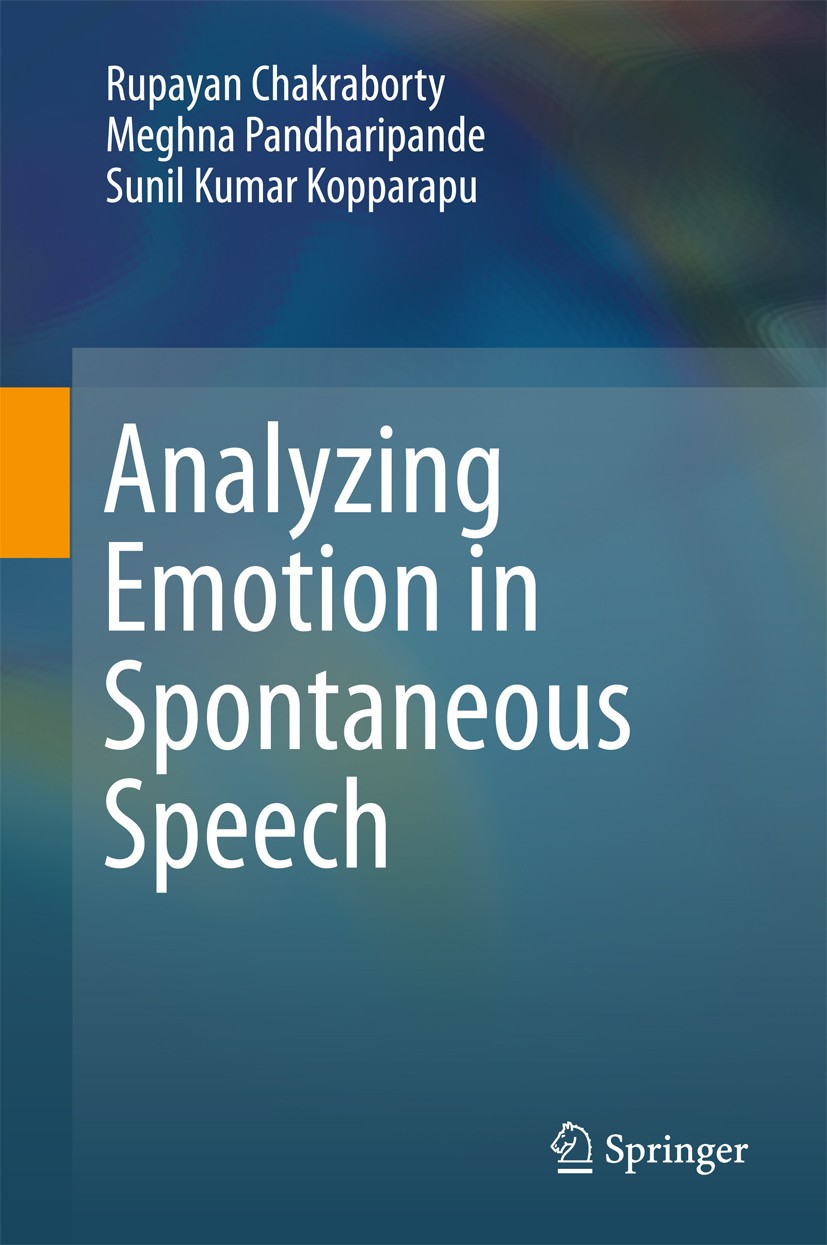| 期刊全称 | Analyzing Emotion in Spontaneous Speech | | 影响因子2023 | Rupayan Chakraborty,Meghna Pandharipande,Sunil Kum | | 视频video | http://file.papertrans.cn/157/156819/156819.mp4 | | 发行地址 | Serves as a handy compact document for researchers and students wanting to start exploring the challenges facing automatic emotion recognition in spontaneous speech.Explains, elaborates, and proposes | | 图书封面 |  | | 影响因子 | This book captures the current challenges in automatic recognition of emotion in spontaneous speech and makes an effort to explain, elaborate, and propose possible solutions. Intelligent human–computer interaction (iHCI) systems thrive on several technologies like automatic speech recognition (ASR); speaker identification; language identification; image and video recognition; affect/mood/emotion analysis; and recognition, to name a few. Given the importance of spontaneity in any human–machine conversational speech, reliable recognition of emotion from naturally spoken spontaneous speech is crucial. While emotions, when explicitly demonstrated by an actor, are easy for a machine to recognize, the same is not true in the case of day-to-day, naturally spoken spontaneous speech. The book explores several reasons behind this, but one of the main reasons for this is that people, especially non-actors, do not explicitly demonstrate their emotion when they speak, thus making it difficult for machines to distinguish one emotion from another that is embedded in their spoken speech. This short book, based on some of authors’ previously published books, in the area of audio emotion analysis, i | | Pindex | Book 2017 |
The information of publication is updating

|
|
 |Archiver|手机版|小黑屋|
派博传思国际
( 京公网安备110108008328)
GMT+8, 2025-11-17 09:33
|Archiver|手机版|小黑屋|
派博传思国际
( 京公网安备110108008328)
GMT+8, 2025-11-17 09:33


